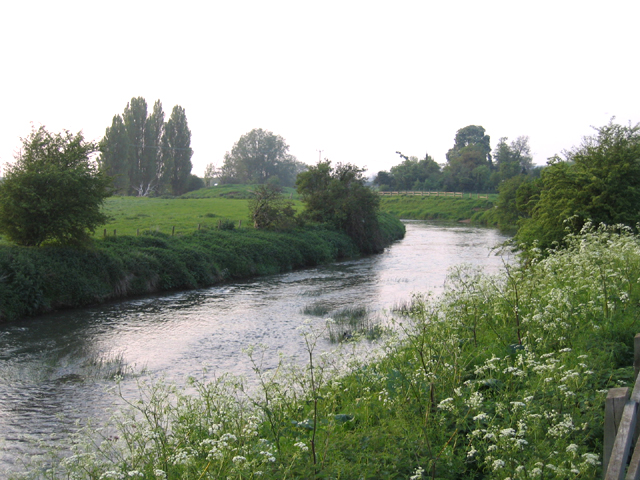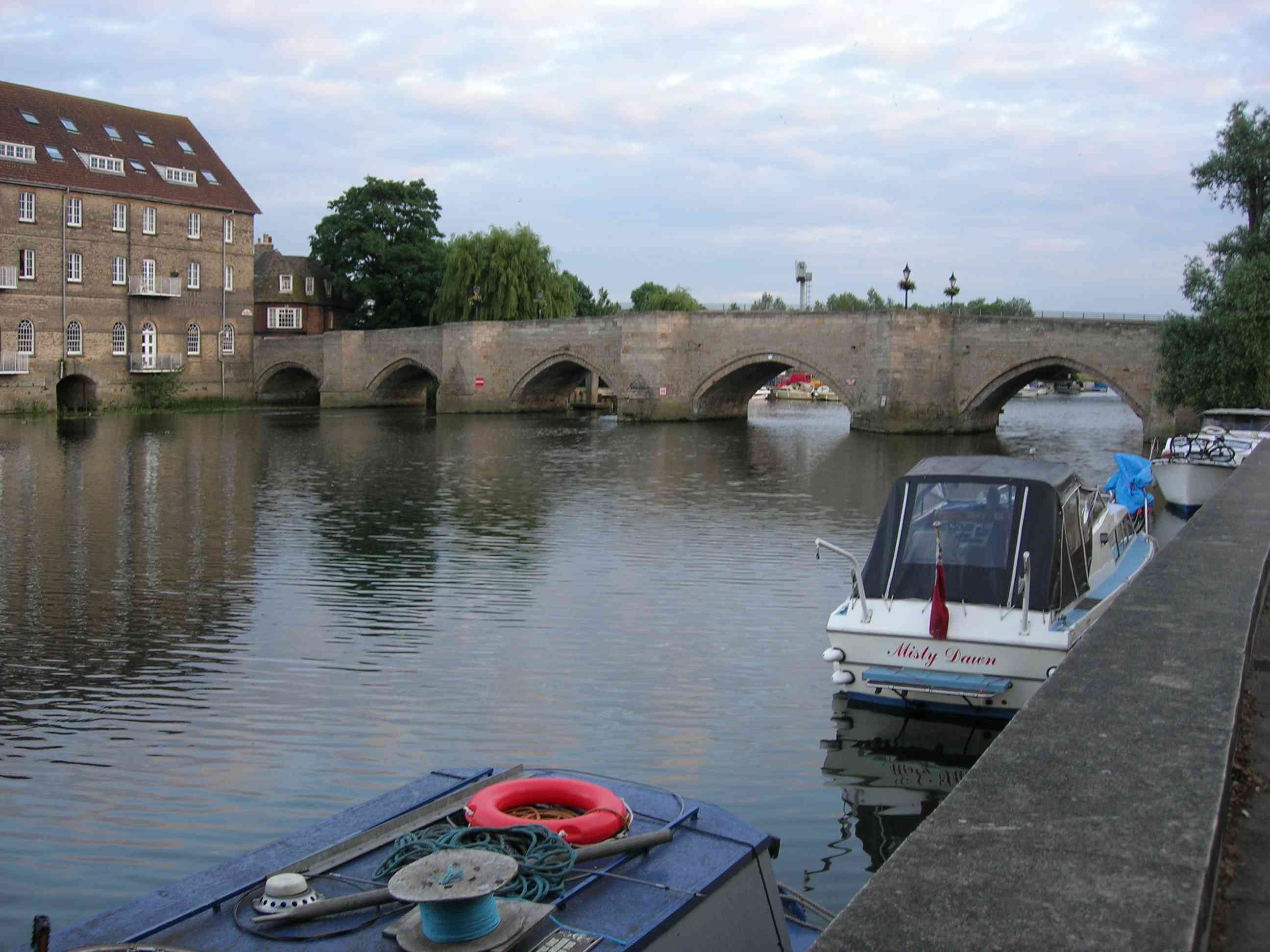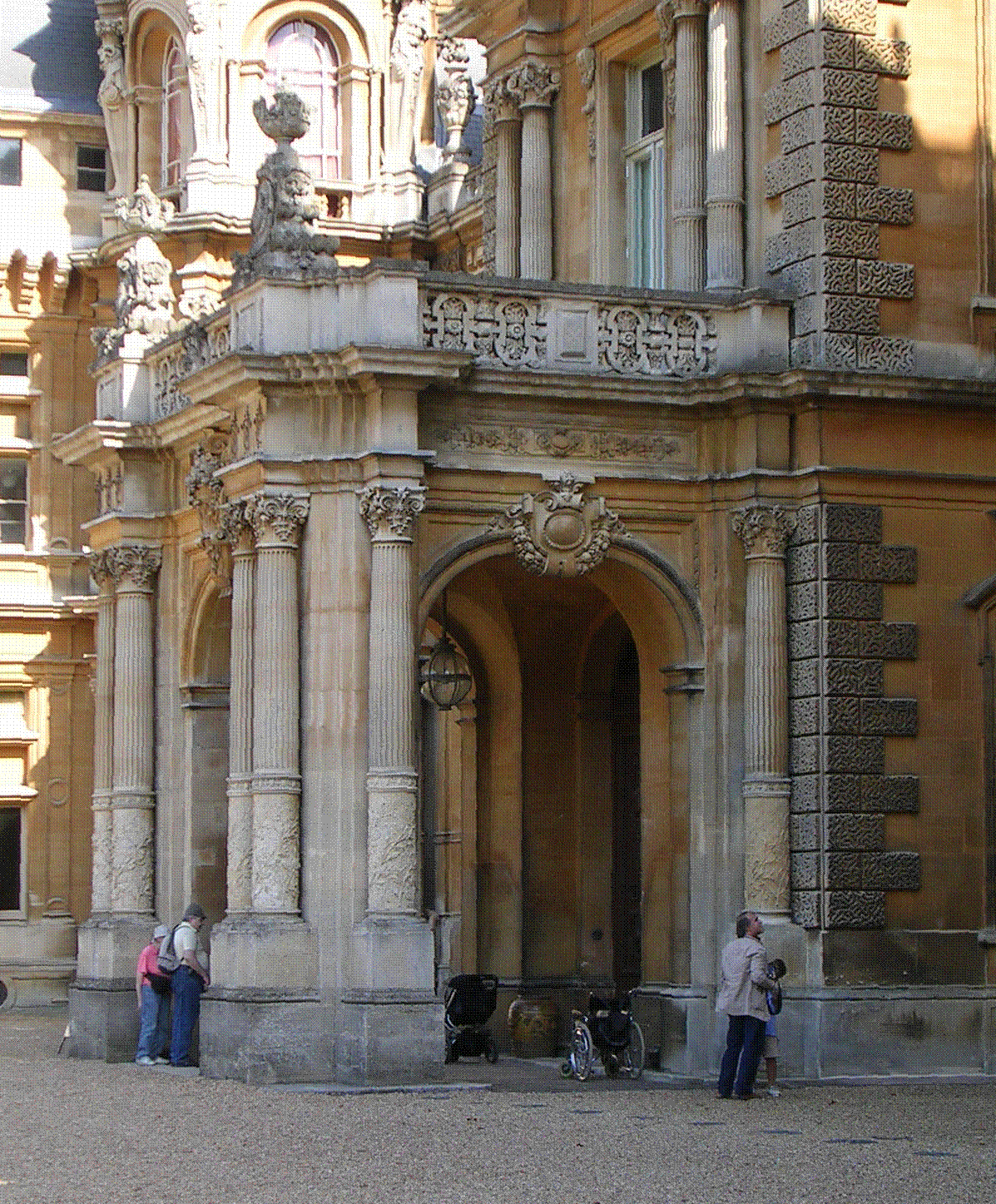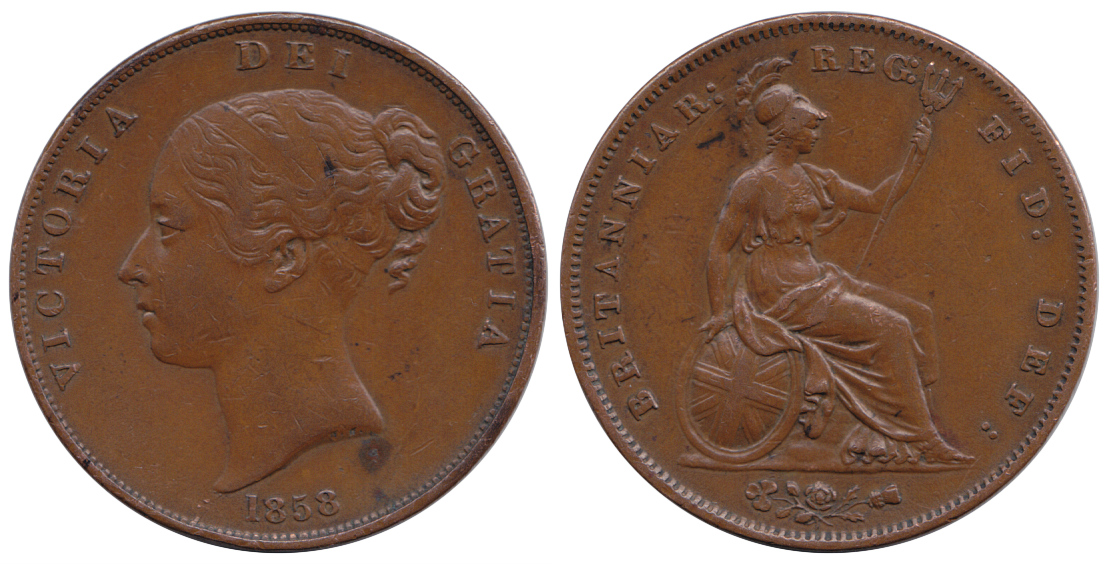|
Southill Park
Southill Park contains the site of late medieval Gastlings or Gastlyns Manor House and is the name given to a country house in Southill, Bedfordshire and its adjoining privately owned gardens and separate public parkland; it includes a lake and woodland. Its focal point is an early Georgian house, for disambiguation known as Southill Park House which is a heritage-listed building in the highest category (Grade I). The parkland has legal designations in heritage and plant or wildlife protection. Further structures in the grounds have heritage protection including the follies of a Tuscan architecture temple and a partially stone-faced bridge, both designed by Henry Holland. History Owners and architects The house was built in the 1720s by George Byng, 1st Viscount Torrington (1663-1733). Its grounds were landscaped by Capability Brown in 1777, and in the same year the building was remodelled to the designs of Henry Holland. It passed down in the Byng family via Pattee Byng, 2 ... [...More Info...] [...Related Items...] OR: [Wikipedia] [Google] [Baidu] |
Southill Park From The Air (geograph 4661589) , Lord Byng of Southill
{{disambig ...
Southill may refer to: *Southill, Bedfordshire, England ** Southill Park, a country house in Southill, Bedfordshire *Southill, Limerick, Ireland *Southill, Weymouth, Dorset, England Southill may also refer to: *Viscount Torrington Viscount Torrington is a title in the Peerage of Great Britain. It was created in 1721 for the statesman Sir George Byng, 1st Baronet, along with the subsidiary title Baron Byng, of Southill in the County of Bedford, also in the Peerage of Gre ... [...More Info...] [...Related Items...] OR: [Wikipedia] [Google] [Baidu] |
Samuel Charles Whitbread
Samuel Charles Whitbread (16 February 1796 – 27 May 1879) was a British Member of Parliament, member of the Whitbread brewing family and founding president of the Royal Meteorological Society. Early life and education Whitbread was the son of Samuel Whitbread and Lady Elizabeth Grey. Grey was the daughter of General Charles Grey, 1st Earl Grey and sister of Prime Minister Charles Grey. He was educated at Eton College and St John's College, Cambridge where he studied mathematics, moral philosophy and classics. On 6 July 1815, Whitbread's father took his own life, whereupon his two sons, William Henry (then aged 20) and Samual Charles (19), inherited the family business and estates. Politics As a Whig MP, he represented the constituency of Middlesex (1820–1830) and was High Sheriff of Bedfordshire in 1831. He made three major contributions to debates including to the Reform of Parliament debate, where he opposed the existence of rotten boroughs and the selling of se ... [...More Info...] [...Related Items...] OR: [Wikipedia] [Google] [Baidu] |
River Ivel
The River Ivel is a north-flowing river in the western part of east of England. It is primarily in Bedfordshire; it is a tributary of the River Great Ouse and has sources including in the Barton Hills. Course The river Ivel has four headwaters of equivalent size. By settled convention its name is given frequently to the lower part of the Flit in the south-west and all of its separate south-east headwater which rises in the north of the parish of Baldock in the far north of Hertfordshire. The rest of its course and catchment area is in Bedfordshire. It flows through the parishes of Stotfold, Arlesey, Henlow, Langford, Biggleswade, Sandy and Blunham. It joins the Great Ouse at Tempsford. The total length is about . Tributaries *The River Hiz joins beside Champneys Henlow, one of four resort hotels. *The Flit joins the Ivel on the western boundary of Langford and its adjoining Ivel Navigation continuation to Shefford, Bedfordshire has meant the lower Flit is frequently l ... [...More Info...] [...Related Items...] OR: [Wikipedia] [Google] [Baidu] |
River Great Ouse
The River Great Ouse () is a river in England, the longest of several British rivers called "Ouse". From Syresham in Northamptonshire, the Great Ouse flows through Buckinghamshire, Bedfordshire, Cambridgeshire and Norfolk to drain into the Wash and the North Sea near Kings Lynn. Authorities disagree both on the river's source and its length with one quoting and another . Mostly flowing north and east, it is the fifth longest river in the United Kingdom. The Great Ouse has been historically important for commercial navigation, and for draining the low-lying region through which it flows; its best-known tributary is the Cam, which runs through Cambridge. Its lower course passes through drained wetlands and fens and has been extensively modified, or channelised, to relieve flooding and provide a better route for barge traffic. The unmodified river would have changed course regularly after floods. The name ''Ouse'' is from the Celtic or pre-Celtic *''Udso-s'', and probably ... [...More Info...] [...Related Items...] OR: [Wikipedia] [Google] [Baidu] |
Porte-cochère
A porte-cochère (; , late 17th century, literally 'coach gateway'; plural: porte-cochères, portes-cochères) is a doorway to a building or courtyard, "often very grand," through which vehicles can enter from the street or a covered porch-like structure at a main or secondary entrance to a building through which originally a horse and carriage and today a motor vehicle can pass to provide arriving and departing occupants protection from the elements. Portes-cochères are still found on such structures as major public buildings and hotels, providing covered access for visitors and guests arriving by motorized transport. A porte-cochère, a structure for vehicle passage, is to be distinguished from a portico, a columned porch or entry for human, rather than vehicular, traffic. History The porte-cochère was a feature of many late 18th- and 19th-century mansions and public buildings. A well-known example is at Buckingham Palace in London. A portico at the White House in W ... [...More Info...] [...Related Items...] OR: [Wikipedia] [Google] [Baidu] |
Hipped Roof
A hip roof, hip-roof or hipped roof, is a type of roof where all sides slope downwards to the walls, usually with a fairly gentle slope (although a tented roof by definition is a hipped roof with steeply pitched slopes rising to a peak). Thus, a hipped roof has no gables or other vertical sides to the roof. A square hip roof is shaped like a pyramid. Hip roofs on houses may have two triangular sides and two trapezoidal ones. A hip roof on a rectangular plan has four faces. They are almost always at the same pitch or slope, which makes them symmetrical about the centerlines. Hip roofs often have a consistent level fascia, meaning that a gutter can be fitted all around. Hip roofs often have dormer slanted sides. Construction Hip roofs are more difficult to construct than a gabled roof, requiring more complex systems of rafters or trusses. Hip roofs can be constructed on a wide variety of plan shapes. Each ridge is central over the rectangle of the building below it. The t ... [...More Info...] [...Related Items...] OR: [Wikipedia] [Google] [Baidu] |
Ashlar
Ashlar () is finely dressed (cut, worked) stone, either an individual stone that has been worked until squared, or a structure built from such stones. Ashlar is the finest stone masonry unit, generally rectangular cuboid, mentioned by Vitruvius as opus isodomum, or less frequently trapezoidal. Precisely cut "on all faces adjacent to those of other stones", ashlar is capable of very thin joints between blocks, and the visible face of the stone may be quarry-faced or feature a variety of treatments: tooled, smoothly polished or rendered with another material for decorative effect. One such decorative treatment consists of small grooves achieved by the application of a metal comb. Generally used only on softer stone ashlar, this decoration is known as "mason's drag". Ashlar is in contrast to rubble masonry, which employs irregularly shaped stones, sometimes minimally worked or selected for similar size, or both. Ashlar is related but distinct from other stone masonry that i ... [...More Info...] [...Related Items...] OR: [Wikipedia] [Google] [Baidu] |
Polite Architecture
Polite architecture, or "the Polite" in architectural theory comprises buildings designed to include non-local styles for aesthetically-pleasing decorative effect by professional architects. The term groups most named current architectural styles and can be used to describe many non-vernacular architectural styles. Irreconcilable architectural practices include Functionalism and Brutalism. Description Polite architecture is characterised by stylistic and romantic features which have been intentionally incorporated by an architect for affectation. A building of polite design is conceived to make a stylistic statement which goes beyond its functional requirements. Its design is deferential to national or international architectural fashions, styles, and conventions; paying little or no regard to the conventional building practices and materials particular to a locality. 'The polite' is also a concept of architectural theory used to differentiate from 'the vernacular'. Architectur ... [...More Info...] [...Related Items...] OR: [Wikipedia] [Google] [Baidu] |
Territorial Designation
In the United Kingdom, a territorial designation follows modern peerage titles, linking them to a specific place or places. It is also an integral part of all baronetcies. Within Scotland, a territorial designation proclaims a relationship with a particular area of land. English and British peerages A territorial designation is an aspect of the creation of modern peerages that links them to a specific place or places, at least one of which is almost always in the United Kingdom. It is given in the patent of creation after the actual peerage title itself, of which it is not considered a part. Life peerages With the exception of royal peerages, which are often created without them, territorial designations are used with the creation of almost all baronies and viscountcies. For instance, the life peerage conferred (in 1992) on the former Prime Minister Margaret Thatcher was created as:''Baroness Thatcher, of Kesteven in the County of Lincolnshire.''The life peerage for the former ... [...More Info...] [...Related Items...] OR: [Wikipedia] [Google] [Baidu] |
Spur
A spur is a metal tool designed to be worn in pairs on the heels of riding boots for the purpose of directing a horse or other animal to move forward or laterally while riding. It is usually used to refine the riding aids (commands) and to back up the natural aids (the leg, seat, hands, and voice). The spur is used in many equestrian disciplines. Most equestrian organizations have rules in about spur design and use and penalties for using spurs in any manner that constitutes animal abuse. Etymology This very old word derives from Anglo-Saxon ''spura, spora'', related to ''spornan, spurnan'', to kick, ''spurn''; cf. Medieval High German ''Sporn'', modern German ''Sporn'', Dutch ''spoor''. The generalized sense of "anything that urges on, stimulus" is recorded in English from'' circa'' 1390. Design The parts of a spur include: *The "yoke", "branch", or "heel band", which wraps around the heel of the boot. *The "shank" or "neck", which extends from the back of the yoke and is ... [...More Info...] [...Related Items...] OR: [Wikipedia] [Google] [Baidu] |
Old Pence
The British pre-decimal penny was a denomination of sterling coinage worth of one pound or of one shilling. Its symbol was ''d'', from the Roman denarius. It was a continuation of the earlier English penny, and in Scotland it had the same monetary value as one pre-1707 Scottish shilling. The penny was originally minted in silver, but from the late 18th century it was minted in copper, and then after 1860 in bronze. The plural of "penny" is "pence" when referring to an amount of money, and "pennies" when referring to a number of coins. Thus 8''d'' is eight pence, but "eight pennies" means specifically eight individual penny coins. Before Decimal Day in 1971, sterling used the Carolingian monetary system (£sd), under which the largest unit was a pound (£) divisible into 20 shillings (s), each of 12 pence (d). The penny was withdrawn in 1971 due to decimalisation, and replaced (in effect) by the decimal half new penny, with p being worth 1.2''d''. History The kingdom ... [...More Info...] [...Related Items...] OR: [Wikipedia] [Google] [Baidu] |
Domesday Book
Domesday Book () – the Middle English spelling of "Doomsday Book" – is a manuscript record of the "Great Survey" of much of England and parts of Wales completed in 1086 by order of King William I, known as William the Conqueror. The manuscript was originally known by the Latin name ''Liber de Wintonia'', meaning "Book of Winchester", where it was originally kept in the royal treasury. The '' Anglo-Saxon Chronicle'' states that in 1085 the king sent his agents to survey every shire in England, to list his holdings and dues owed to him. Written in Medieval Latin, it was highly abbreviated and included some vernacular native terms without Latin equivalents. The survey's main purpose was to record the annual value of every piece of landed property to its lord, and the resources in land, manpower, and livestock from which the value derived. The name "Domesday Book" came into use in the 12th century. Richard FitzNeal wrote in the '' Dialogus de Scaccario'' ( 1179) that the bo ... [...More Info...] [...Related Items...] OR: [Wikipedia] [Google] [Baidu] |
.jpg)






